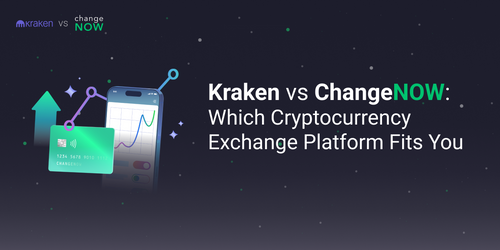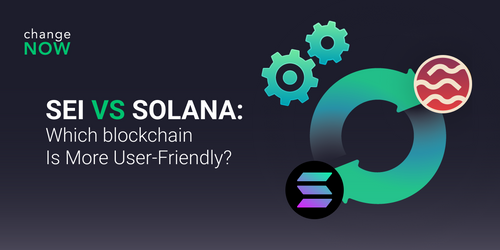Crypto Debit And Credit Cards: All You Need to Know
Crypto credit and debit cards solve this problem: they allow you to buy a coffee with Bitcoin in seconds by exchanging your cryptocurrency to fiat on the go.
Crypto cards allow you to earn cashback, they vary in terms of fees, limits, and many other parameters. Here’s what you need to know to choose your crypto debit (or credit) card.
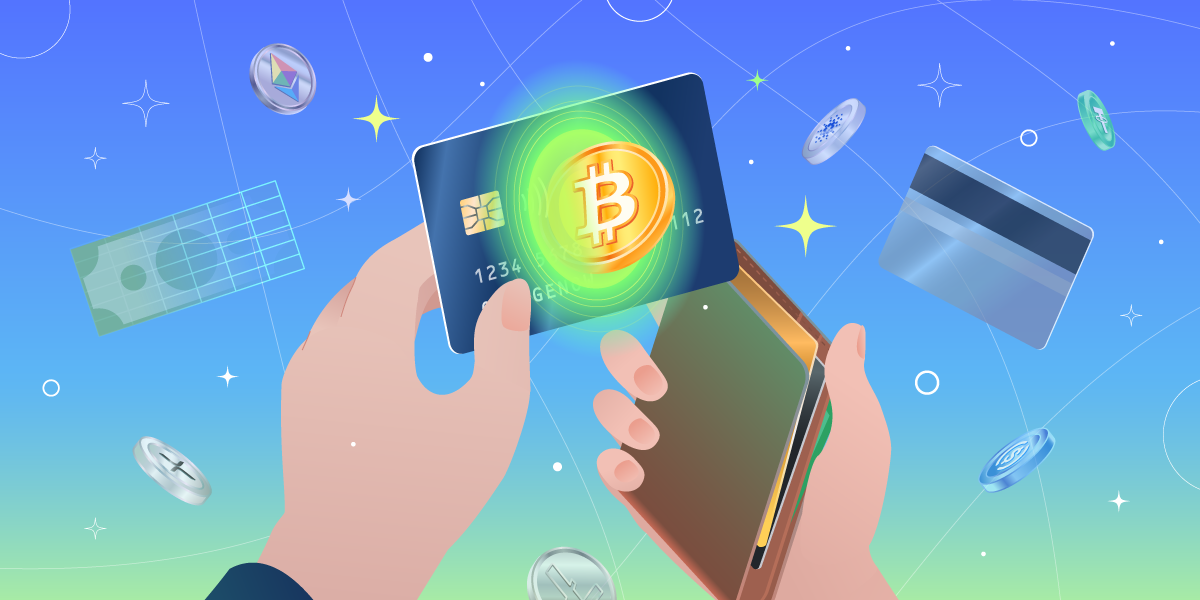
How Do Crypto Credit and Debit Cards Work?
In terms of user experience, a crypto card works just as any other bank card: you place it onto the terminal, and in a few seconds, the payment is confirmed.
Here’s how this works from a technical standpoint. First, you create an account on a crypto platform and deposit some coins (for a debit card) or borrow them (for a credit card). The sum is displayed in your balance, but that’s not the cryptocurrency you own cryptographically – you don’t have private keys from it, like in a non-custodial wallet. Services that issue crypto cards are custodial, meaning that the coins are stored on the company’s cold wallets and aren’t directly involved in each of your transactions.
When you pay with your card, the crypto platform deducts the money from your crypto balance and pays the store in fiat. The exact sum you’re charged is defined by the current exchange rate. Since the conversion takes place inside the crypto platform and doesn’t involve on-chain transactions, there’s no need to wait for lengthy confirmations.
Both crypto debit and credit cards convert digital coins into fiat at the time you make a purchase. They are also similar in how they accrue cashback. Here’s how they are different:
- Debit cards deduct a certain sum of money from the funds you already have in your crypto account. Before cryptocurrency debit cards emerged, you’d have to cash out before using these funds at a grocery store. The process could take from minutes to hours. A crypto debit card does this immediately and automatically.
- Credit cards issue you a credit line – you borrow money from a crypto platform because you’ve deposited collateral and/or passed a successful credit check. When you pay with a crypto credit card, this is formally not your money, and you will have to repay it later.
Do People Trust Crypto Cards?
Here’s some data from Visa payment system: the volume of crypto-associated payments has reached $2.5 billion in fiscal Q1 2022. This is 70% of the entire fiscal 2021, and Visa emphasizes the increasing demand for crypto products and plans to continue to “lean into the crypto space”. The system allows paying with its crypto cards in 100 million locations globally, while Mastercard accepts payments in 90 million spots.
These numbers point to one thing: customers are actively using crypto cards, while payment systems see the growing demand and expand the possibilities for cryptocurrency owners.
How Do I Choose a Crypto Debit or Credit Card?
Here are 6 criteria that will help you pick one:
- Fees. Take a deep dive into the subject before ordering a crypto card – besides fees for offline purchases, there may also be charges for foreign transactions, ATM withdrawals, purchases beyond the limits, and so on. It’s best to review the card’s Terms of Use to avoid surprises.
- Issuance. Before using any card, you’ll have to make a verified account on a crypto platform. Sometimes you’ll need to stake coins to become eligible for certain types of cards (like on Crypto.com).
- Supported assets. Choose the card that supports cryptocurrencies you would like to invest in.
- Cashback. You can choose an optimal card based on the amount of money you’re going to keep there and the most frequent categories of your expenses – this will maximize your cashback.
- Availability. While some cards are available globally, others are only operating in the EU or the USA.
- Spending limits. Usually, they are up to a few thousand USD per day. Virtual cards’ limits are smaller than those of physical ones.
7 Best Crypto Debit Cards
Сrypto.com – Widest variety of supported coins
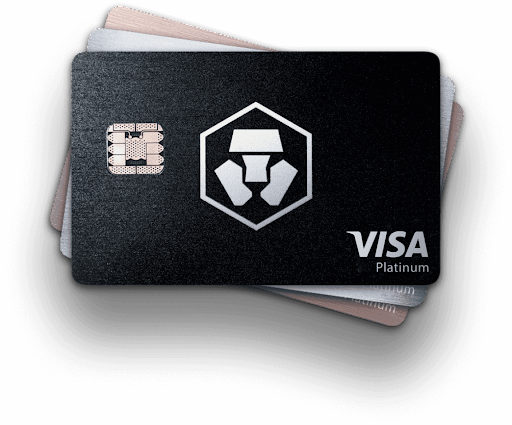
Сrypto.com offers a 5-tier system of debit cards: the more platform’s native CRO token you stake, the better terms you have. Crypto.com offers robust cashback to large investors and little to no fees for many transactions. Over 80 cryptos are available.
| Fees | No monthly, issuance, and ATM withdrawal fees (if within the limits). 1% card top-up fee |
|---|---|
| Issuance | No special terms for the lowest-tier card (“Midnight Blue”). $400 in CRO tokens staked for 6 months to apply for a second-tier Ruby Steel card. Top-tier Obsidian card: $400,000 stake in CRO |
| Supported coins | 80+ cryptocurrencies, 20+ fiat currencies |
| Cashback | 0–5% depending on the card tier |
| Availability | Anywhere Visa is accepted |
| Limits | For all types of cards: ATM withdrawals – €2,000 per day, spend limit – €25,000 daily |
Coinbase Card – Best for Coinbase users
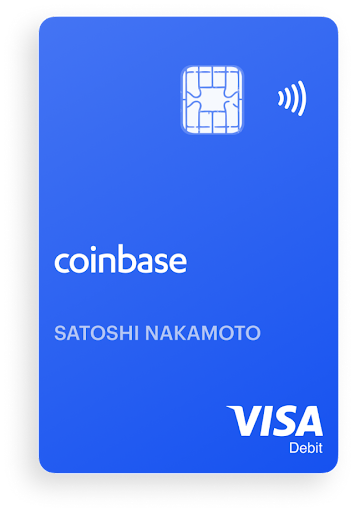
This may be the best crypto debit card in case you have a verified Coinbase account – you can spend your assets directly from your Coinbase wallet without having to keep any fiat in it. Purchases in USD and USDC are free, others are charged with a 2.49% conversion fee. Withdrawals are available from any ATM in the world.
| Fees | 2.49% when crypto converted for fiat (but USDC conversion for free). No monthly payments |
|---|---|
| Issuance | Verified Coinbase account needed. €4.95 issuance fee in EU and the UK |
| Supported coins | 8 (BTC, ETH, LTC, USDC, and others) |
| Cashback | Variable reward rate up to 4% |
| Availability | Anywhere Visa is accepted |
| Limits | Daily $2,500 for transactions and $1,000 for ATM withdrawals |
Wirex – Best for worldwide use
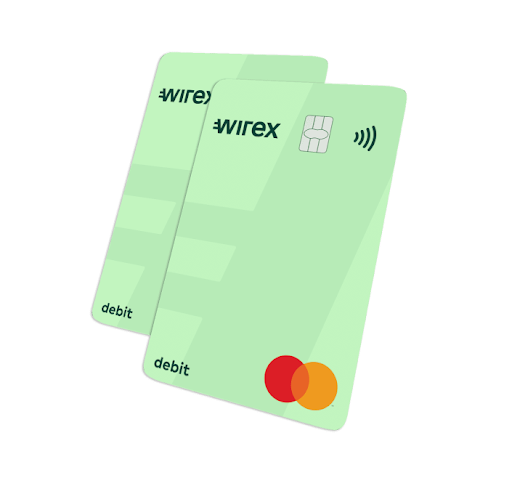
Wirex card is best for globe-trotters – it’s accepted in 100 million locations worldwide and supports 150+ fiat currencies. Free ATM withdrawals and cashback of up to 8% are some of the perks. In X-Accounts, you can earn up to 16% interest on fiat and up to 10% interest on BTC and ETH.
| Fees | No issuance, monthly, or withdrawal fees. 1% top-up fee |
|---|---|
| Issuance | No special terms |
| Supported coins | 10 cryptos and 150+ fiat currencies |
| Cashback | Up to 8% |
| Availability | Anywhere Visa is accepted |
| Limits | Max spend amount 30,000 € per day, ATM withdrawals 500 € daily |
NearPay – A bridge to Web3
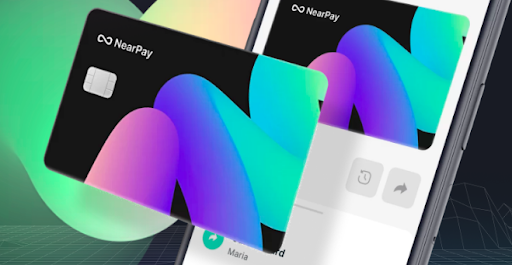
NearPay card is the first one launched by a layer-1 network for dApps. It serves as a bridge for all Web3 lovers as it supports 38 coins including DeFi tokens. Virtual and physical cards are available.
| Fees | Monthly fee 1, domestic ATM fee €2.5 |
|---|---|
| Issuance | Registration and automated KYC. €5 fee for physical card |
| Supported coins | 38 cryptocurrencies |
| Cashback | N/A |
| Availability | EU & the UK, plans to cover the United States and Asia |
| Limits | No daily spending limit, €450 daily cash withdrawal limit. €30,000 limit for a single transaction |
BitPay – Best for U.S. citizens

BitPay was first offered in 2016 with the focus on the USA. It has no conversion fees within the country, and you can get it if you have a Social Security number and driver’s license. The card can be used worldwide as well. Note that cashback features are limited.
| Fees | No transaction fees for domestic purchases, 3% fee for foreign purchases, $2.50 ATM withdrawal fee |
|---|---|
| Issuance | Social Security number and driver’s license needed |
| Supported coins | 7 major cryptocurrencies |
| Cashback | Recently launched, up to 15% for selected retailers |
| Availability | Anywhere Mastercard is accepted. Best in the USA |
| Limits | $10,000 spend limit per day, three $2,000 ATM withdrawals daily |
Binance Card – For Binance lovers

Binance card offers a flexible cashback system in a few tiers – those who have at least 1 BNB on their balance are eligible for a 2% reward on all purchases. The card will cater to Europeans who have a verified Binance account. The virtual card has quite low daily spending limits.
| Fees | 0.9% ATM and spend fees. No monthly fees |
|---|---|
| Issuance | Verified Binance account needed |
| Supported coins | 12 (BTC, ETH, BNB, BUSD, and others) |
| Cashback | Level system: 0.1% cashback if average 30-day BNB holding between 0 and 1 Binance coins. 2% if 1–10 BNB, up to 8% if 600+ BNB |
| Availability | European Economic Area |
| Limits | Daily spend limits: €870 for virtual card and €8,700 or physical one. Daily ATM withdrawal limit: €290 |
Trastra – Best for the EU

Trastra is one of the most convenient crypto cards for the European Economic Area: it has no fees for online and offline purchases in Euro. The referral system allows you to win €5 in case your friend activates a Trastra card – and also earn 0.2% from their total exchange amount. No cashback options are offered, though.
| Fees | Spend fee 0%, monthly fee €1.25. ATM withdrawal fee €0.35 |
|---|---|
| Issuance | €9 fee |
| Supported coins | 6 (BTC, BCH, ETH, USDC, LTC, XRP). |
| Cashback | None |
| Availability | European Economic Area |
| Limits | €8,000 daily spend limit |
Crypto Credit Cards
Gemini

Now that we reviewed the top crypto debit cards, let’s turn our attention to crypto credit cards. The first one on our list is Gemini. To get it, you will need to go through a credit check. Gemini card offers a great cashback program for all – with no tiers and necessarily staked tokens. The card is available across the globe; it’s made of black, silver, or rose gold 75% recycled stainless steel.
| Fees | No annual and foreign transaction fees |
|---|---|
| Issuance | Verified Gemini account needed. Credit check |
| Supported coins | 60+ cryptocurrencies |
| Cashback | In 1 selected cryptocurrency. 3% for dining (on purchases up to $6,000), 2% for groceries, 1% for all other purchases |
| Availability | Anywhere Mastercard is accepted |
Nexo
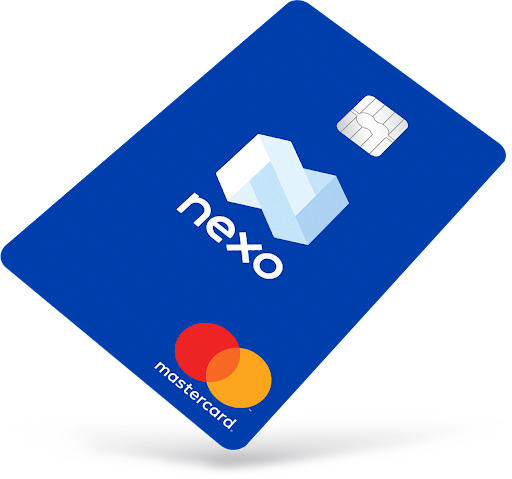
Nexo credit card lets you spend funds borrowed against a crypto collateral. With Nexo, you can spend up to 90% of the value of your crypto portfolio without selling it. A 4-tier loyalty program opens wider opportunities to those with larger collateral.
| Fees | No monthly, annual, or inactivity fees. No foreign transaction fees for up to €20,000 per month |
|---|---|
| Issuance | Available to Nexo borrowers only. Portfolio balance of at least $50 for digital card and $500 for physical one |
| Supported coins | Those available in the Nexo platform |
| Cashback | Depends on the loyalty tier. Up to 2% on all purchases in NEXO and 0.5% in BTC. |
| Availability | Anywhere Mastercard is accepted |
| Limits | Up to 10 free ATM withdrawals (€1.99 fee for each beyond the limit) |
Things to Keep in Mind
A crypto card sounds cool and you can’t wait to get one? Before you do, consider the following:
- Volatility. Crypto promises to start mooning one day again, but remember that it may also lose its value at the wrong time much faster than any robust fiat currency. Keeping a portion of your money in stablecoins may be a good idea, but after the collapse of TerraUSD, we need to be even more cautious.
- Taxes. In most countries where crypto legislation is in place, selling crypto for fiat is a taxable event. There are calculators that help you count your tax burden automatically – we’ve described the best ones in this article.
- Regional restrictions. If you’re an avid traveler, make sure it’s possible to use your crypto card abroad – some of the options are for EU-wide use only.
Bottom Line
A crypto card is perfect if you’d love to pay with your digital coins with no hassle of converting it into fiat. Pick a card based on supported coins, cashback features, fees, and available geography. Remember about the spend limits and taxes, and you’ll have a great experience using a crypto debit or credit card.

